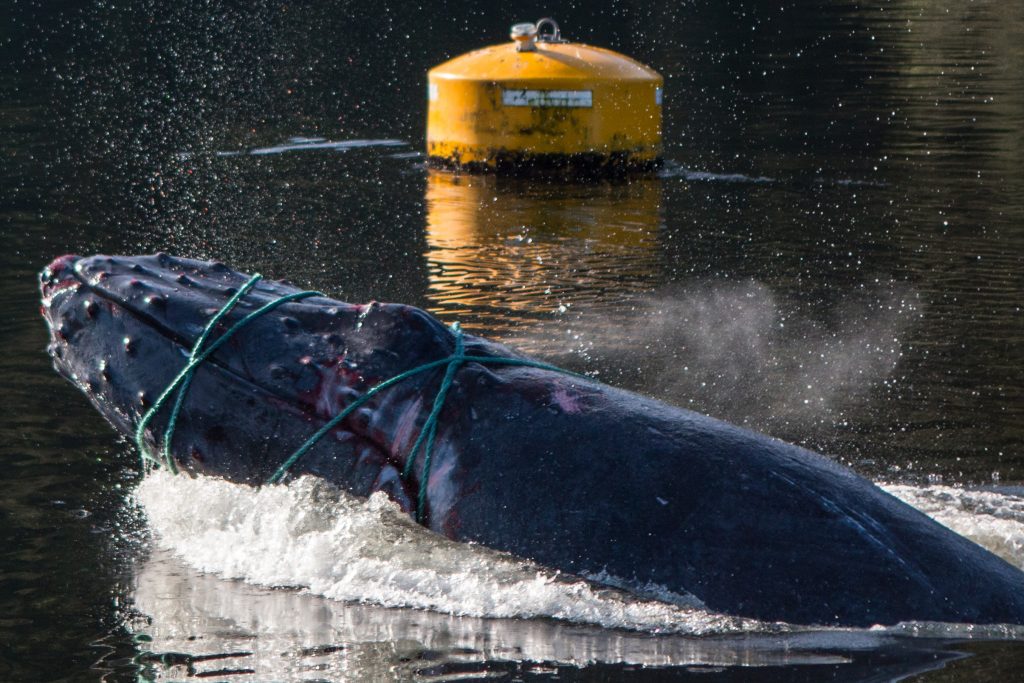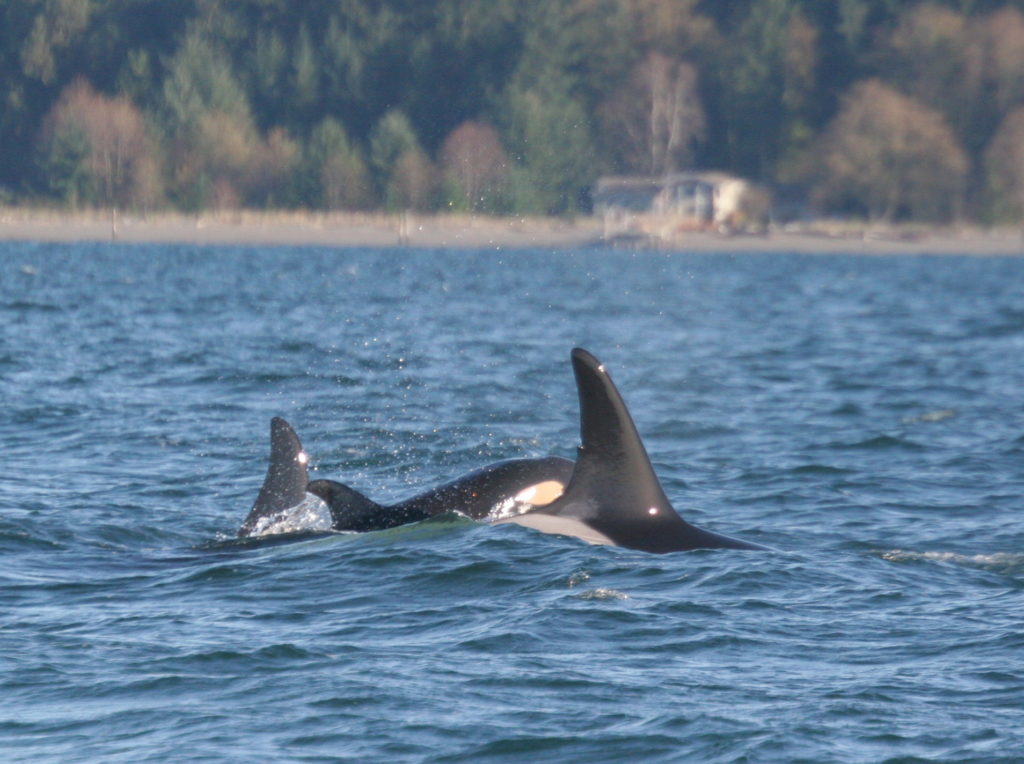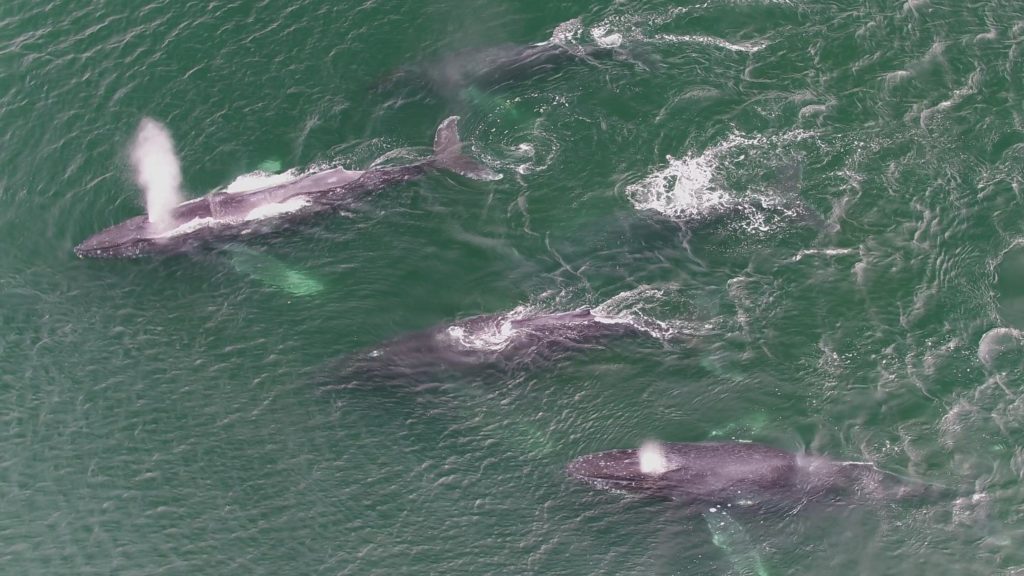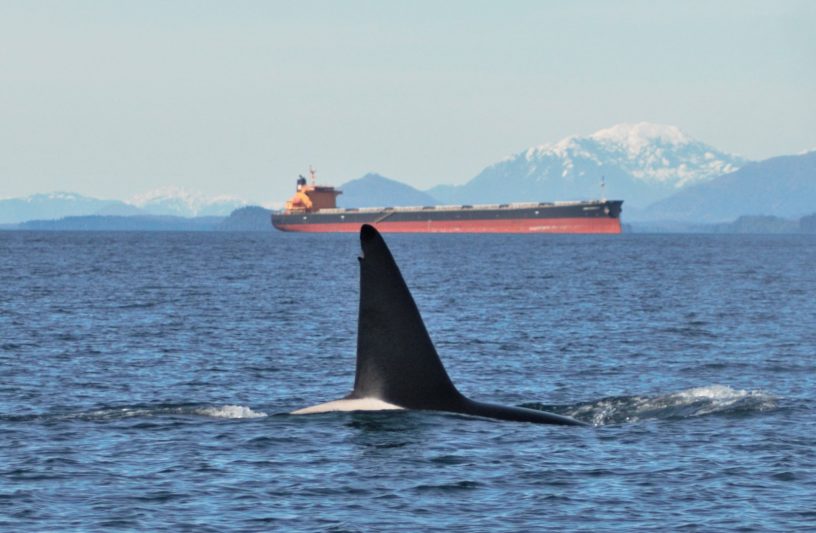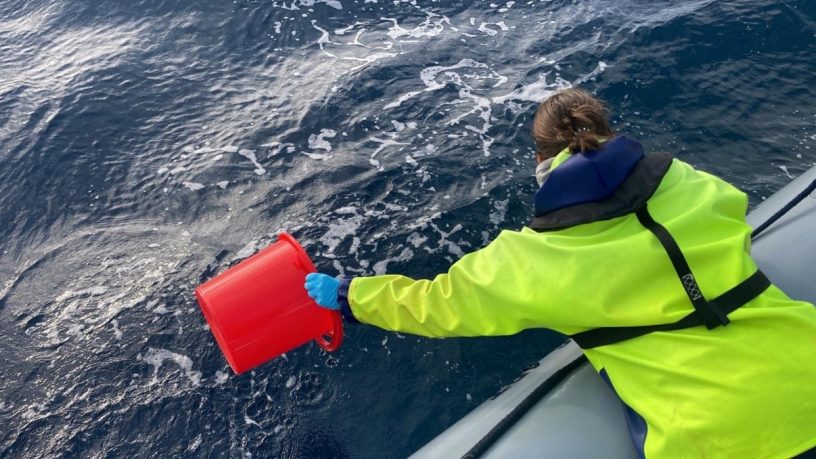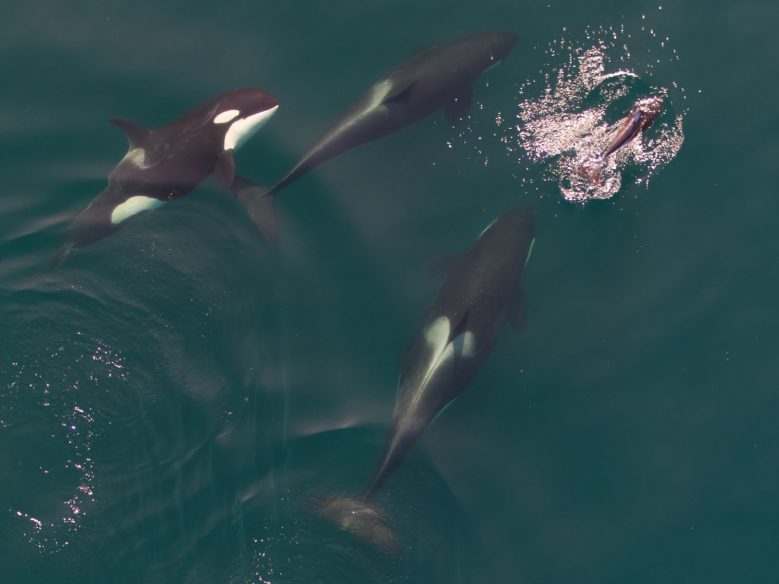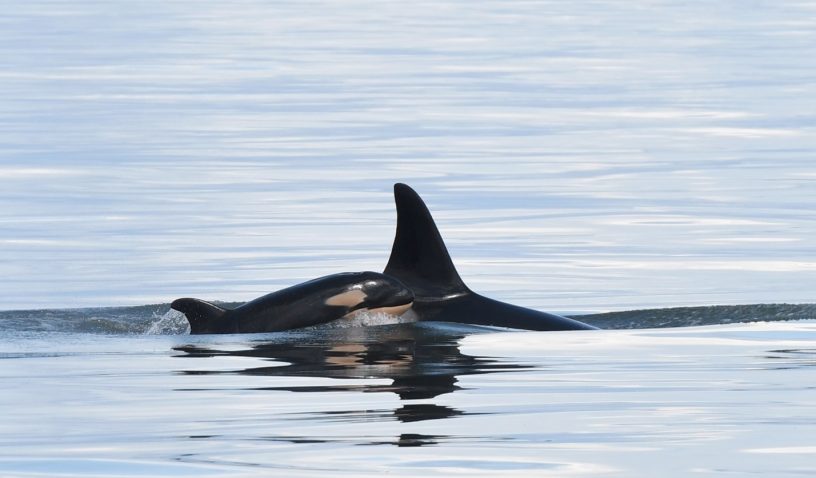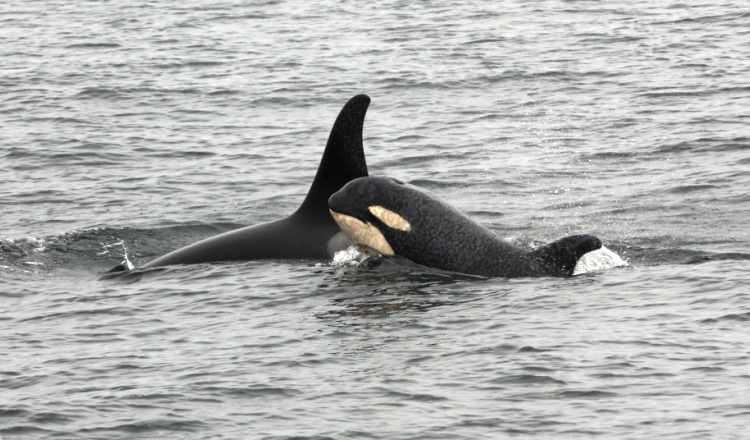
Newborn Killer Whales Spotted off B.C. Coast
There has been a lot of buzz in the news lately surrounding newborn killer whales off the coast of British Columbia including the surprise addition to L pod confirmed yesterday, making it three total newborn whales in the past few months. Killer whale births can certainly be cause for excitement. Not only can they be a good sign for a population, they also make for some spectacular sightings. A new baby killer whale goes through many interesting stages within its first year. Due to close family ties among certain groups of killer whales, the birth of a calf can potentially provide researchers with a wealth of information about its family. While a baby whale is a positive sign, researchers tend to be cautiously optimistic when one is born due to the many challenges vulnerable calves face in the rigorous ocean. Life can be trying for a whale in its first year of life, but this can also be a fascinating time filled with unique milestones of learning and growth for these magnificent marine mammals.
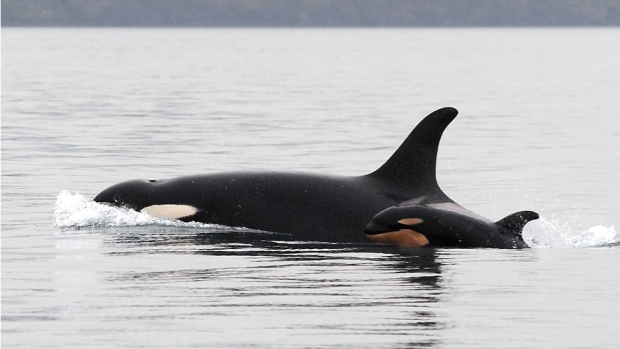
There are three populations of killer whales living off the coast of Western North America: residents (Northern and Southern), Bigg’s (transients) and offshores. Resident killer whales have a complex social structure in which sons and daughters live in groups (called matrilines) with their mother throughout their entire lives, even if they have offspring of their own. In these groupings, bonds remain strong between siblings, even if their mother has died. Each matriline is distinguished by family-specific vocalizations and dialects shared among closely related individuals, almost as though they have their own unique family accent. Bigg’s killer whales share similar family groupings, although offspring may disperse from their mothers once they reach maturity, especially females once they have calves of their own. Very little is yet known about the elusive offshore killer whales’ social structure. Many details of its family dynamics and vocalizations remain to be discovered.
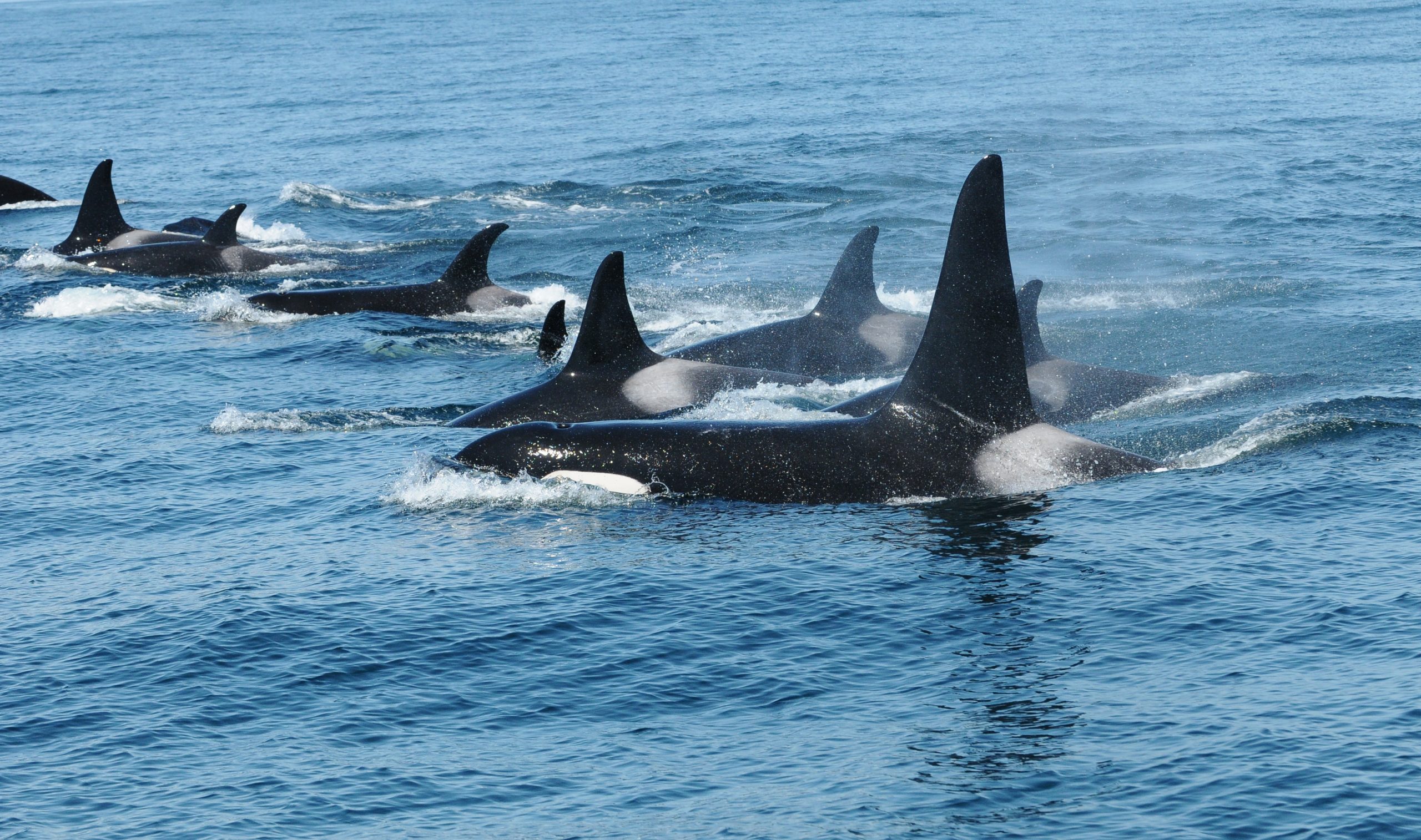
A new killer whale is born after a 15 to 18 month gestation period. At birth, the calf is generally about two metres long (six to seven feet) and weighs about 181 kilograms (400 pounds)! The calf is born underwater, and usually emerges tail first, although successful headfirst births have been reported. The hungry calf wastes little time before nursing, filling up on its mother’s high fat milk so it can immediately start accumulating a thick layer of blubber that will help it survive. It is thought that when a baby is born, the mother or other members of the group will cooperatively raise the calf to the surface, likely ensuring it is able to breathe and swim while adjusting to its ocean world.
Fresh from the womb, the calf has very soft skin and a tinge of yellow or orange in its lighter markings. There is much speculation regarding this colouration; a prevailing theory being that blood vessels are closer to the surface in calves. Usually within the first year, the skin along with the dorsal fin and fluke will gradually stiffen and the calf’s markings will brighten to the stark white that we recognize in adult killer whales.
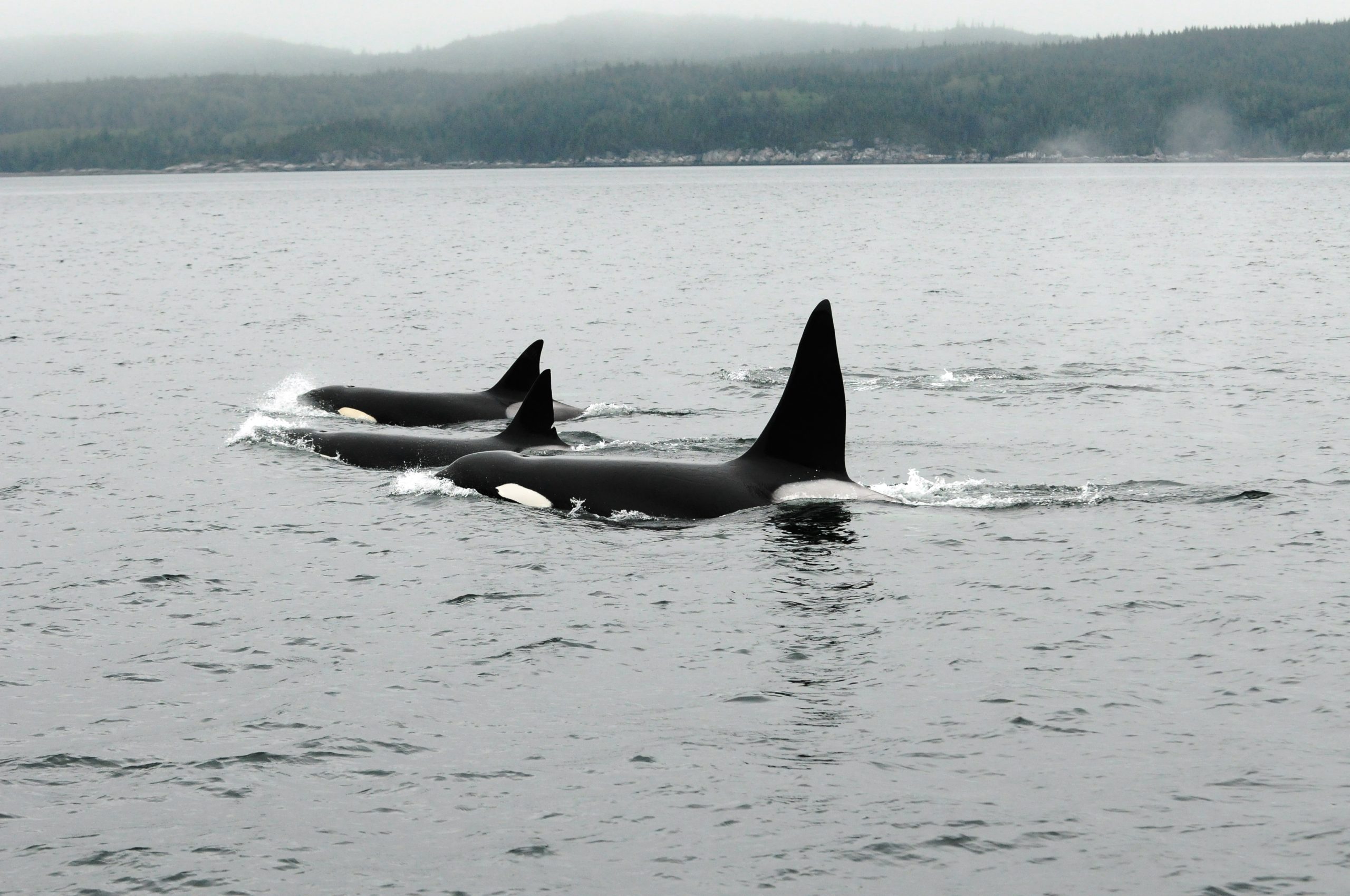
In killer whale populations living in family groups, it seems that mother knows best. The first year of the calf’s life is spent almost entirely with its mother who passes on necessary survival skills about migration, navigation, communication, social interaction and foraging. Killer whales are unique in the world of marine mammals, in that a mother will demonstrate prey-sharing and teach foraging behavior to her offspring.
Communication is often key for social species like killer whales. Related groups of killer whales have similar dialects that are passed onto new offspring. Studies have shown that after a new calf is born, call patterns within family groups may change, and family-specific call types may be produced more frequently in the weeks following the birth of a calf. It is thought that this likely facilitates the learning process of the “acoustic family badge” among family members, and the new calf learns this unique sound by simply listening and mimicking.
While a new calf learns to live in its undersea world, it faces many challenges. The first year of life is a difficult one, and calves experience their highest mortality during this time – up to 50 per cent. Researchers speculate that this may be a result of poor mothering, infectious or non-infectious diseases attacking their weaker immune system, or infanticide. In addition to calf-specific threats, these young animals also face the dangers shared by killer whales in any life stage. Killer whales today are subjected to high levels of endocrine-disrupting pollutants, are faced with a reduced food supply, and are subject to noise pollution and human disturbances such as boat collisions. It is more important today than ever for citizens do their part to help decrease human threats to the killer whale and its vulnerable calf.
Researchers are always looking for changes in populations, and you never know when you might spot a new calf. Report sightings of whales, dolphins, porpoises and sea turtles to the Vancouver Aquarium B.C. Cetacean Sightings Network and you can be a part of our citizen science research project.
REFERENCES
Asper, D.E., Glenn Young, W., & M.T. Walsh. 1988. Observations on the birth and development of a captive-born Killer whale Orcinus orca. International Zoo Yearbook. 27(1):295-304.
Duffield, D. A., Odell, D., K., McBain, J., F. & B. Andrews.1995. Killer whale (Orcinus orca) reproduction at Sea World. Zoo Biology. 14 (5): 417-430.
Ford, J. K. B., Ellis, G. M., & Balcomb, K. C. (1994). Killer Whales: The Natural History and Genealogy of Orcinus orca in British Columbia and Washington State. (1st ed.) Canada: University of British Columbia Press and USA: University of Washington Press, Seattle.
Gaydos, J. K., K. C. Balcomb III, R. W. Osborne, and L. Dierauf. 2004. Evaluating potential infectious disease
threats for southern killer whales, Orcinus orca: a model for endangered species. Biological Conservation
117:253-262.
Mann, Janet. Parental Behaviour. In: Perrin, W.F., B. Würsig and J.G.M. Thewissen (eds.) Encyclopedia of Marine Mammals. Academic Press, San Diego. pp 880-882.
Weib, B., M., Ladich, F., Spong, P., & H. Symonds. 2006. Vocal behavior of resident killer whale matrilines with newborn calves: The role of family signatures. The Journal of the Acoustical Society of America. 119 (1): 627-635.
Posted February 27, 2015 by Vancouver Aquarium
